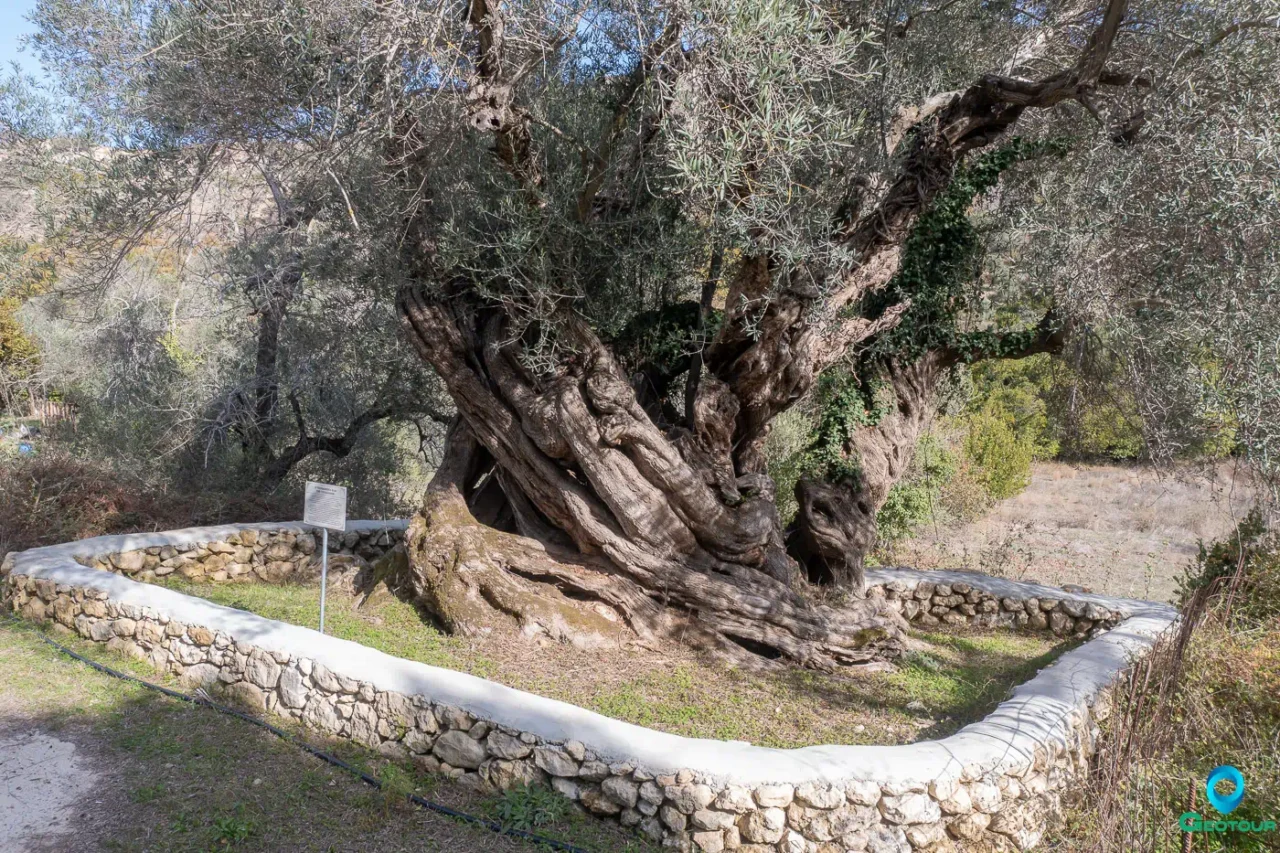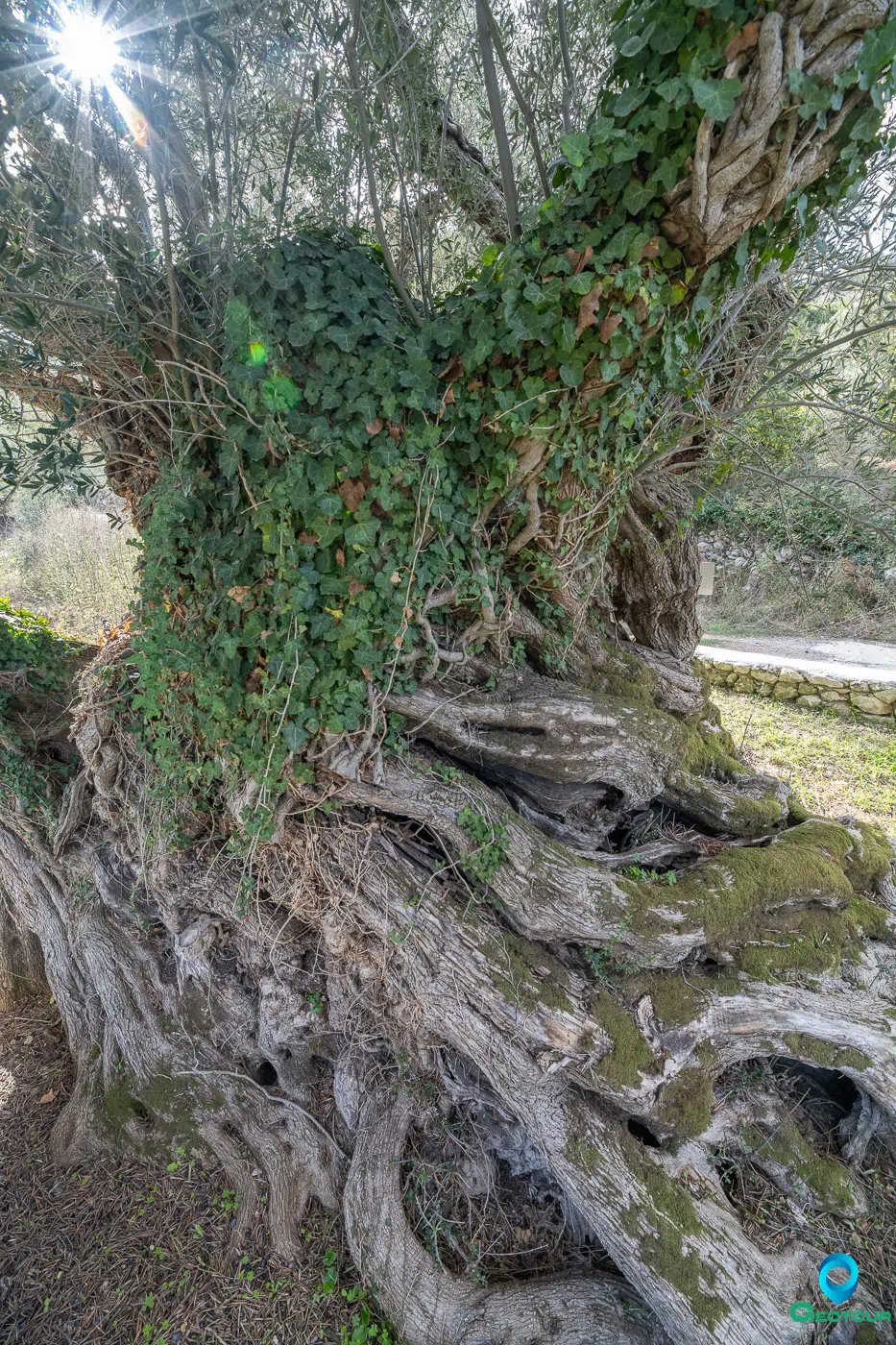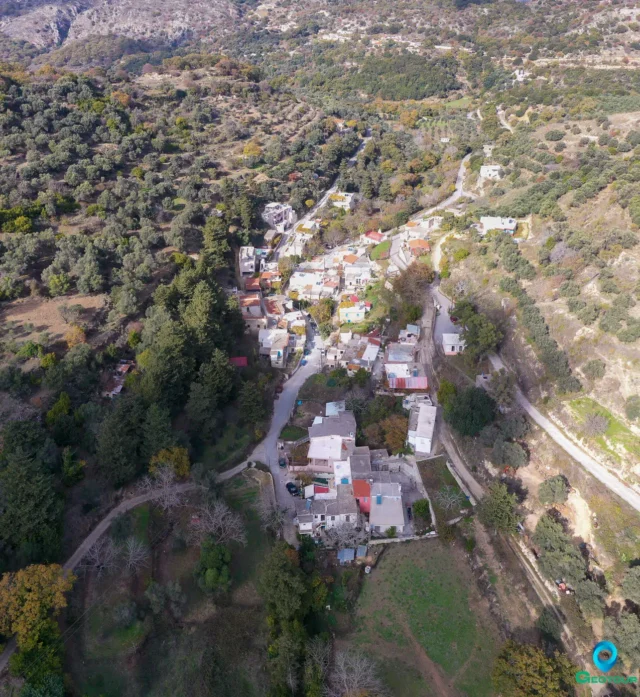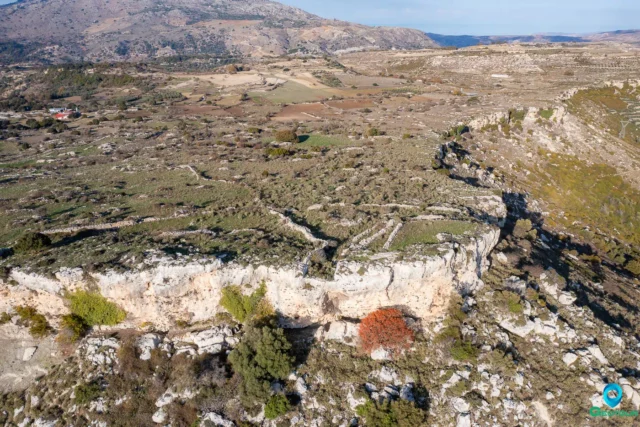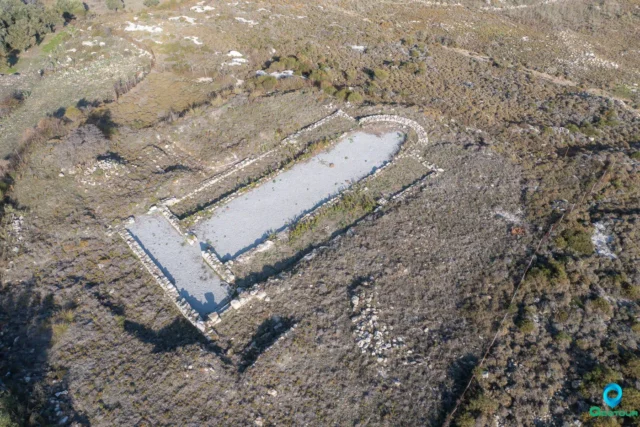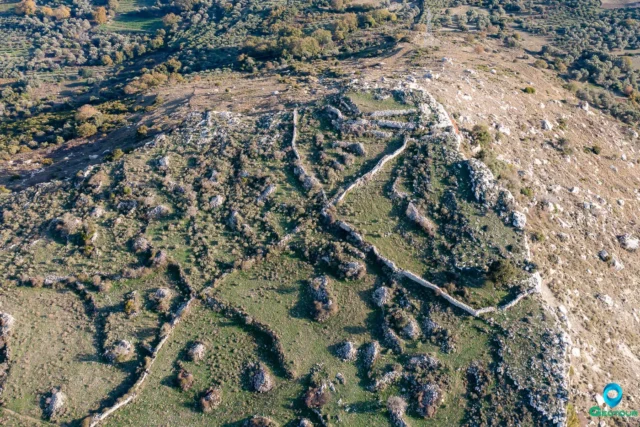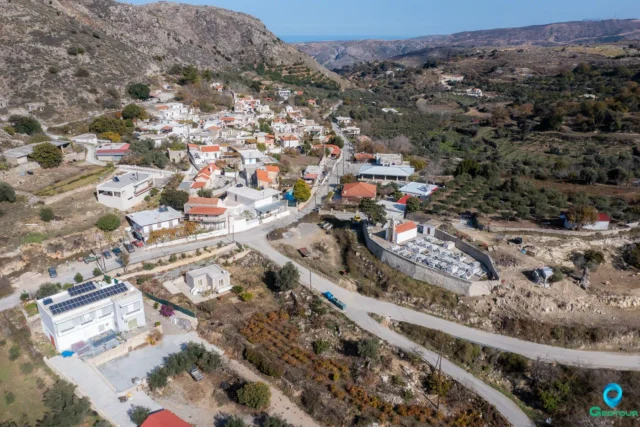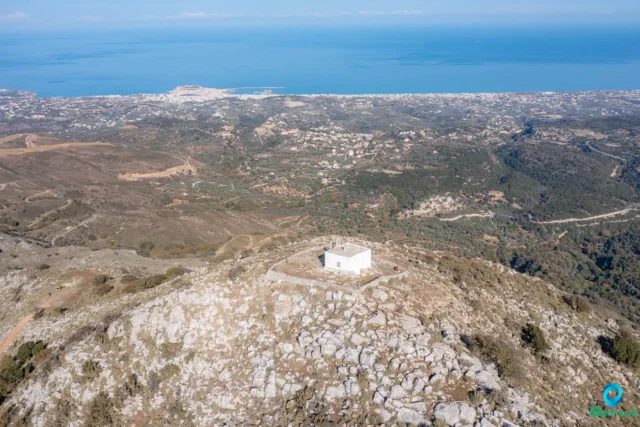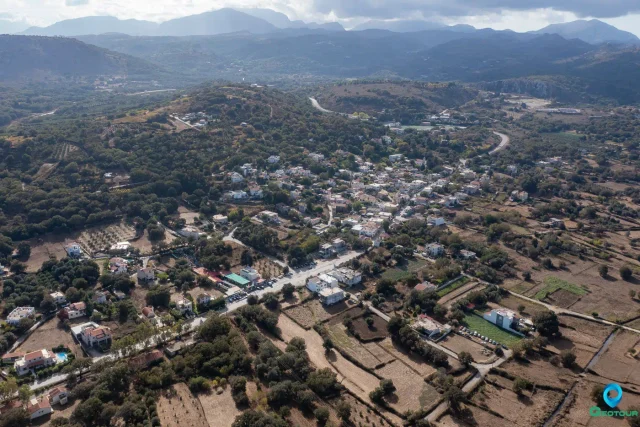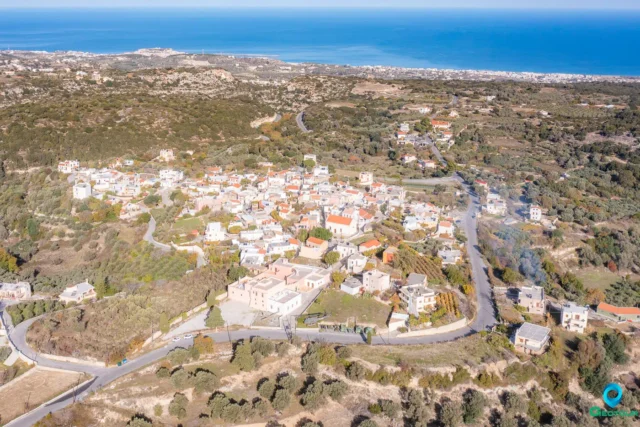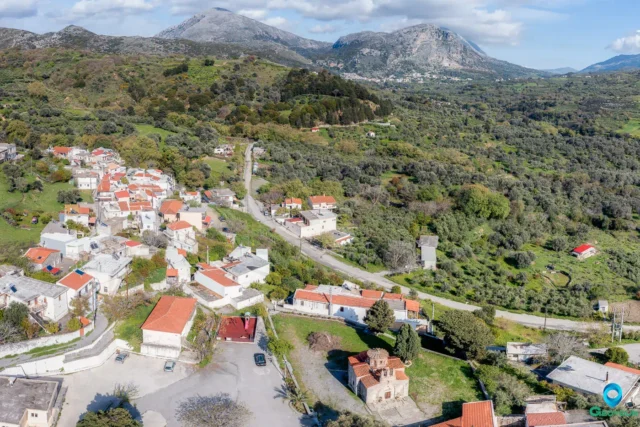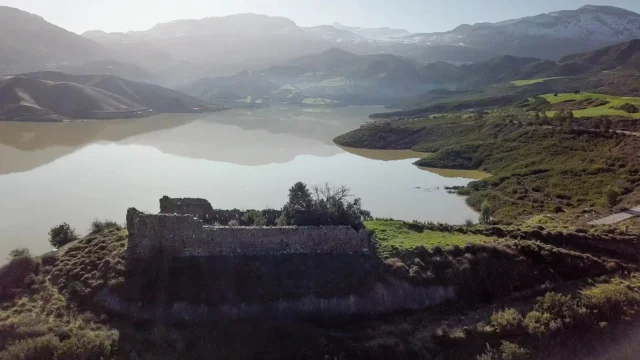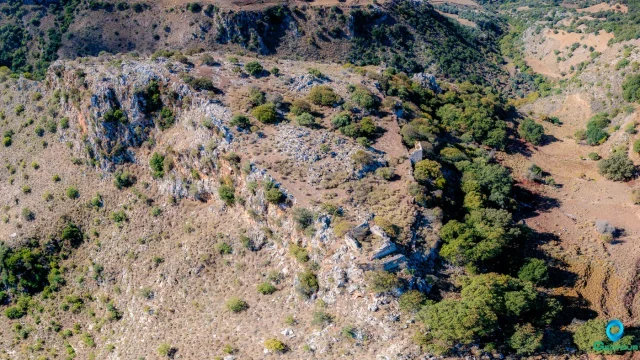The Goulediana olive tree, located at the “Laggos” site, is an ancient tree that demonstrates the long history of olive cultivation in Crete. This large tree, of the mastoeidis (tsounati) variety, is approximately 1750 years old, based on its growth rings.
Dimensions and Age
The tree’s impressive dimensions speak to its advanced age. It stands at approximately 12 meters tall with a circumference of 17.5 meters at its base. The trunk is gnarled and knotted, bearing the marks of centuries of growth and resilience.
Historical Significance
The olive tree has played a central role in Cretan culture and economy for millennia. The island’s fertile soil and favorable climate have made it an ideal location for olive cultivation since ancient times. The presence of this ancient tree in Goulediana suggests that the tradition of olive cultivation in this area is deeply rooted in the past.
Connection to Onithe
The proximity of the ancient olive tree to the Onithe archaeological site raises the possibility that olive cultivation was an important economic activity for the inhabitants of the ancient city. The fertile lands surrounding Onithe would have been suitable for olive groves, providing a valuable source of food and oil for the community.
Symbolism and Cultural Significance
The olive tree holds deep symbolic and cultural significance in Crete. It is a symbol of peace, prosperity, and longevity. In Greek mythology, the olive tree was a gift from the goddess Athena to the city of Athens, and it has been associated with wisdom and victory ever since. The olive branch is also a symbol of peace and reconciliation.
In Crete, the olive tree is an integral part of the landscape and the local way of life. Olive oil is a staple of the Cretan diet, and it is used in a variety of dishes and culinary traditions. The olive harvest is an important annual event, bringing communities together to celebrate the fruits of their labor.










